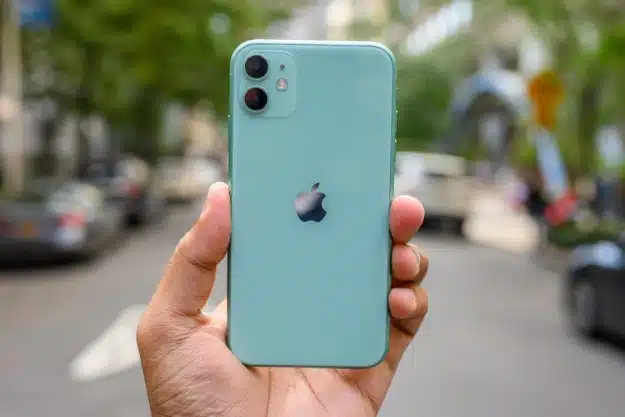Table of Contents
How To Connect Bluetooth Settings For iPhone 11?
How To Connect Bluetooth Settings For iPhone 11? Updating your iPhone to the latest version of iOS helps ensure that Bluetooth features work as designed.
Make sure your Bluetooth accessory is turned on and in discovery mode. This varies by device but might involve pressing a dedicated button or activating a power switch.
If the problem persists, reset your iPhone. This could resolve the issue but will erase other network settings like known Wi-Fi networks and VPN configurations.
How to Turn Bluetooth On?
Using Bluetooth, you can connect wireless headphones, speakers, keyboards, car kits, and other accessories to your iPhone. Bluetooth is also how your iPhone or iPad communicates with Apple Pencil, Apple Watch, and Continuity features like Handoff.
Before you can connect a device to your iPhone, make sure that Bluetooth is turned on. On most iOS devices, the Bluetooth toggle switch is located in Settings. On iPhone X and later, the Bluetooth icon is available in the Control Center. Swipe up from the bottom of your iPhone or iPad to open Control Center, then tap the Bluetooth icon.
Some devices, such as wireless headsets, have built-in Bluetooth capability and do not require a separate Bluetooth setting. However, many other Bluetooth accessories have specific ways to put them in discovery mode.
Once Bluetooth is activated, your iPhone starts looking for and listing other devices in range. If you see a device that you want to connect to, select it from the list. Some accessories display a friendly name, while others display a 48-bit unique address that is set by the manufacturer.
If you don’t plan to use a particular Bluetooth accessory again, remove it from the list by selecting the i icon next to the device and tapping Forget This Device. This is especially important if you use Bluetooth in public places where someone else could intercept your connection (see Securing Your Wireless Network for more information).
How to Turn Bluetooth Off?
When you’re not using Bluetooth, it’s best to leave it disabled so unauthorized devices can’t connect to your iPhone. However, you’ll still need to “pair” Bluetooth hardware devices, like headphones and speakers, so they recognize each other over time.
The easiest way to turn on or off your iPhone Bluetooth settings is via the Control Center. Tap the blue iPhone Bluetooth shortcut to toggle the feature on or off.
If you toggle Bluetooth off in the Control Center, it will only disable Bluetooth until 5 a.m. local time the following day, and it will reactivate automatically if you walk or drive into range of a wireless network or if your iPhone 11 restarts. However, you can shut off your iPhone’s Bluetooth radios indefinitely in the standard settings menu.
If you’re having trouble with a Bluetooth device, it may be helpful to reset your iPhone’s network settings.
You’ll need to know your passcode to perform this operation, but it can fix issues with Bluetooth connectivity that aren’t easily solved with other methods. Just keep in mind that resetting your iPhone will wipe out other network settings, such as Wi-Fi networks and passwords, cellular data, VPN (virtual private network) configurations, and more.
How to Pair an Accessory?
Bluetooth is the way that wireless headphones, speakers, and other accessories connect to iPhones. It’s also a general-purpose technology used by other devices such as keyboards and car stereos. Bluetooth’s range varies by accessory but typically is no more than a few dozen feet. Using Bluetooth requires that both Devices be in discovery mode, which is indicated by a small light on the device or the word “discoverable” on its screen (the process of activating discovery mode varies by accessory; consult its operating instructions for specifics).
Once the two devices are within proximity, the iPhone automatically scans and displays the available devices. If a password is required to connect, enter it as instructed. The pairing process is complete when the iPhone appears in the list of available devices as a blue Bluetooth icon, or in Control Center if Bluetooth is enabled there.
It’s a good idea to disconnect a Bluetooth device when you’re not using it, or when you leave your home, office, or vehicle. This helps conserve battery power. To disconnect an accessory, open Settings and tap Bluetooth. Find the device you want to unpair, then tap the information button next to it and select Forget This Device. You can repair the accessory later, provided that it is still in discovery mode and hasn’t been disconnected by someone else.
How to Disconnect an Accessory?
While Bluetooth is most well-known as a way to wirelessly connect headsets and speakers to phones, it’s also used with keyboards, cars, stereo systems, game controllers, and more. If an accessory won’t pair or connect to an iPhone, try restarting it and following the instructions that came with it. If the problem persists, you can reset your iPhone’s network settings to erase previous Wi-Fi networks and passwords, cellular settings, VPN configurations, and more, but that should be your last resort.
To disconnect an accessory, open Settings and tap Bluetooth. If the Bluetooth toggle switch is on (green), your iPhone will display a list of presently paired accessories. Tap the i next to an accessory, then tap Forget This Device to remove it from your iPhone. If the accessory requires a passcode to enter pairing mode, you’ll need to find the code in its manual or on its screen. If you forget the code, it will remain unpaired and in discovery mode for the rest of its battery life.
You can also disable the “USB Accessory — Unlock to use accessories” setting on your iOS device to prevent this message from appearing every time a new USB accessory is connected. However, disabling this feature can expose your iOS device to a potential security risk. It’s up to you to decide whether the added peace of mind is worth the possible risk.






Add comment